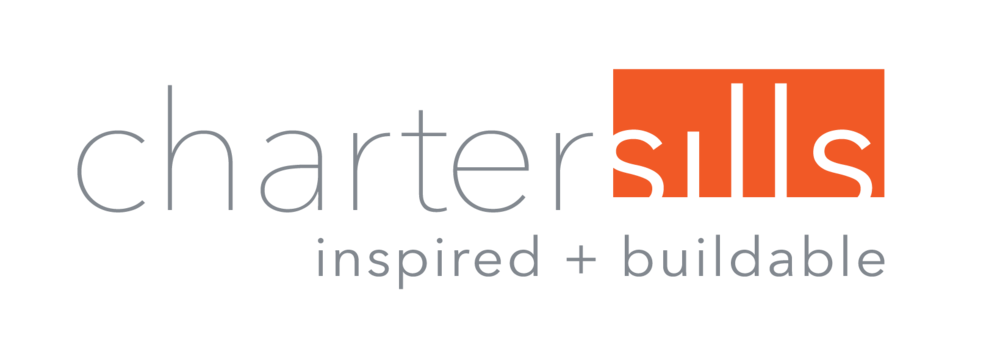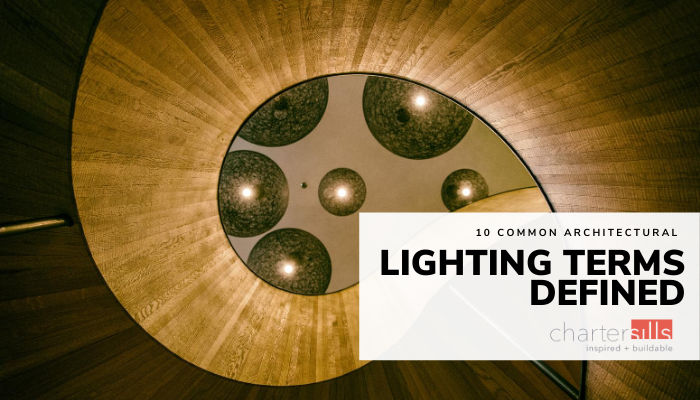Want to talk Architectural Lighting Design like a pro? In this blog post we’re pulling back the curtain and explaining some common industry jargon.
1) Accent lighting
A focused output of light into a narrow beam that highlights a specific architectural or decorative feature, setting it apart from its immediate surroundings and drawing our eyes to the object. Accent lighting is often used to illuminate artwork, make signage more noticeable, or make items look more appealing in a display.
2) Ambient lighting
The opposite of accent lighting, ambient lighting refers to the general lighting used to facilitate visibility in a space, whether that light be natural, artificial, or a combination thereof.
3) Angle of light
The angle between the positioning of a light source and the direction from which it is viewed. Calculating this angle helps guide the orientation of a light source in order to achieve the desired illumination effect. An angle of 0° refers to looking directly into the light source, and the higher the angle, the more diffuse the light will appear to the eye. Lower angles will retain the most brightness, while the light will appear softer as the angle goes up.
4) BUG rating
In order to describe and quantify the amount of light emitted in an unwanted fashion, the BUG (backlight, uplight, and glare) rating is calculated. Backlight refers to light directed behind the fixture, which impairs visibility of objects in front of the light source (think of how hard it is to see someone clearly on a Zoom call if they are sitting in front of a window). Uplight refers to the light that escapes above a fixture, which is typically inefficient, wasted light, contributing to light pollution when outdoors. Glare refers to directed light that makes it hard to see when it hits the eye (think of when the sun hits the windshield of a car outside your window at just the right angle so that it feels like a laser is shooting into your eye). The BUG scale runs from 0-5 for each component, with 0 indicating minimal light going in unwanted directions (meaning the desirable front light is maximized by the fixture), and 5 indicating that the emitted light is not controlled, creating effects that are not eye-friendly.
5) Correlated Color Temperature (CCT)
Correlated color temperature (CCT) refers to the range of how blue or yellow the color of a light source appears. The temperature in CCT indicates the temperature to which one needs to heat a black object in order to glow with that same color (as opposed to the actual temperature of the light source). CCT values range from 2700K, creating a yellow glow associated with a warm, relaxing environment to 4000K, resulting in a neutral white tone associated with balance between relaxation and concentration, to 6500K, generating a faint blue tinge, considered to have an energizing effect.
6) Daylight Harvesting
The practice of daylight harvesting involves harnessing as much natural light as possible in order to create a bright appealing indoor environment and reduce energy costs, while striking a balance with building cooling needs in order to maximize the energy efficiency of a space. This type of illumination can range from natural light as the primary light source to simply the presence of a window or two to offset the use of artificial light. Daylight harvesting ensures that a space is not over-lit, or under-lit, and the occupants of the space are provided consistent and optimal lighting levels.
7) Occupancy Sensor
Have you ever been working intensely in an office for too long and suddenly had the lights go out? That would be the work of an occupancy sensor, which detects the presence of humans through movement, via infrared or ultrasonic radiation. Occupancy sensors are designed to maximize energy-efficiency by determining when light may no longer be necessary to avoid wasting electricity.
8) Photometry
Photometry refers to the measurement of how light leaves a source and fills its immediate surrounding area, as perceived by the human eye. Essentially, photometry captures the intensity, brightness, and evenness of light in a space, helping architectural lighting designers determine whether a lighting strategy is sufficient for a space and informing projections for electrical needs.
9) Color Rendering Index (CRI)
Color Rendering Index (CRI) measures how colors look under a light source when compared to natural light. CRI is measured from 0-100, with 100 being a perfect score for accuracy of naturalness. In lighting design, CRI is something noted on nearly every fixture cutsheet and an important concept to consider in lighting design. Lights with a CRI measuring more than 80 are considered acceptable for most projects. However, lights measuring greater than 90 are considered “high CRI” and offer the highest level of natural color accuracy.
10) Value engineering
Value engineering is a method of enhancing the value of a service by examining its function. This process defines value as the ratio of function to cost, meaning that value can be boosted by either improving the function or reducing cost. In lighting design, value engineering involves assessing available product options in order to build the best strategy that achieves the desired project criteria with respect to budget expectations. The value of a project can be determined, and improved, either by reducing the initial cost of materials or by examining the life cycle of the lighting strategy to determine savings that will be gained by energy efficiency or other cost-saving measures down the line.
At CharterSills, we believe that when lighting is designed correctly, it can add dimension to the simplest of spaces. Lighting can turn an ordinary space into a work of art. Whatever design challenges clients present, CharterSills responds with a solution that exceeds their expectations. Contact us today at (312) 759-5909 or by email at info@chartersills.com.


